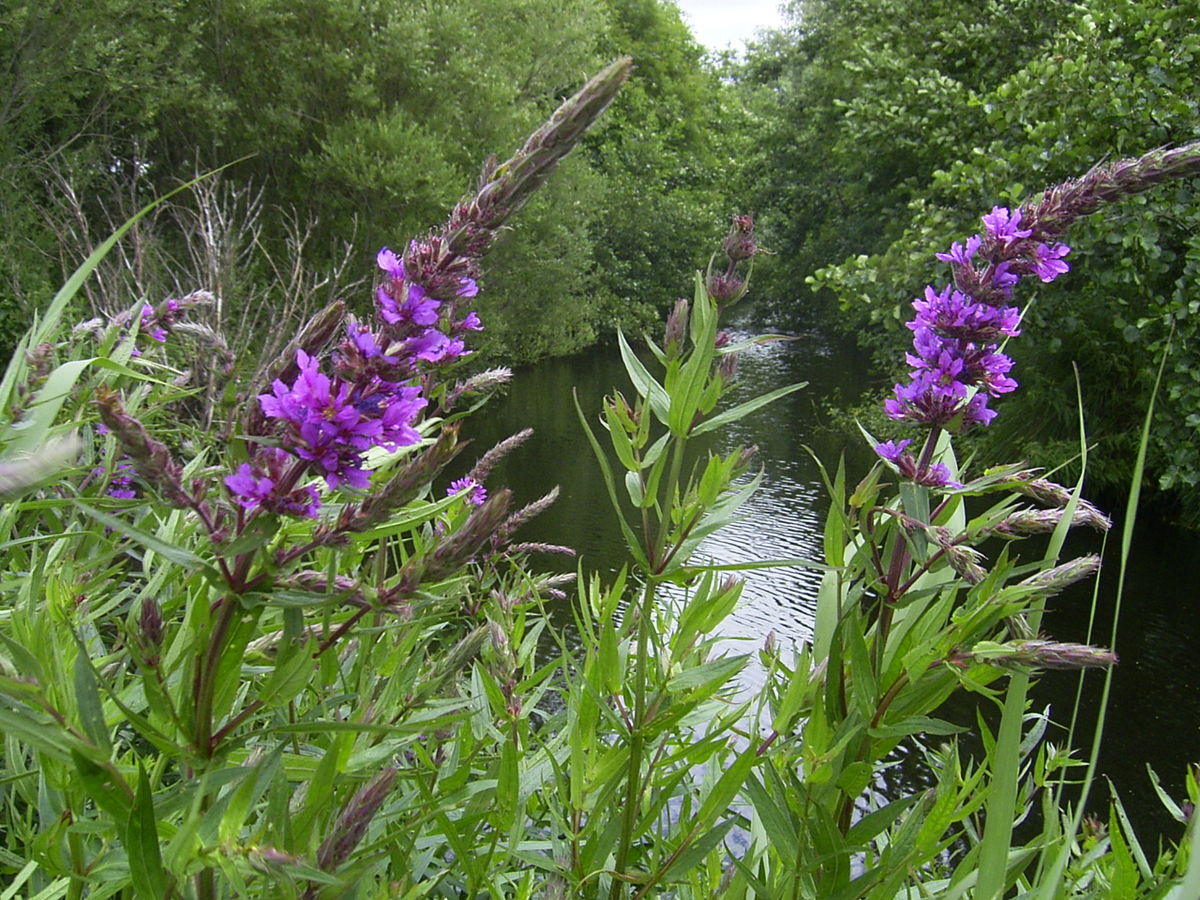Purple loosestrife
(Lythrum salicaria salicaria)

Description
Lythrum salicaria salicaria is a perennial herbaceous plant commonly known as purple loosestrife. It belongs to the Lythraceae family and is native to Europe and Asia. The plant is commonly found growing in wetlands, along riverbanks, and in other damp environments. The species has been introduced to North America and has become invasive in many areas. Description: Lythrum salicaria salicaria is a tall, erect plant that can grow up to 2 meters in height. The stems are woody at the base and become herbaceous towards the top. The leaves are lance-shaped and grow opposite each other on the stem. They are typically 3-10 cm long and 1-2 cm wide. The leaves are smooth and have a glossy appearance. The flowers of Lythrum salicaria salicaria are arranged in dense spikes at the top of the stem. The individual flowers are small and have five petals that are purple or pink in color. The flowering period for this species is typically from June to September. The fruit of the plant is a capsule that contains many small seeds. Habitat: Lythrum salicaria salicaria is typically found growing in wetland environments such as marshes, bogs, and along the edges of rivers and streams. The plant prefers full sun to partial shade and can tolerate a wide range of soil types, including sandy and clay soils. Distribution: Lythrum salicaria salicaria is native to Europe and Asia and has been introduced to North America. It is now found in many parts of the United States and Canada and is considered invasive in many areas. The plant is also found in other parts of the world, including Australia and New Zealand. Uses: Lythrum salicaria salicaria has a long history of medicinal use. The plant was traditionally used to treat a wide range of ailments, including diarrhea, dysentery, and hemorrhoids. The plant was also used as a natural dye, producing shades of pink, purple, and red. Conservation: Lythrum salicaria salicaria is considered an invasive species in many areas and can outcompete native plant species. The plant is known to grow aggressively and can form dense stands that displace native vegetation. As a result, efforts have been made to control the spread of the plant in some areas. Conclusion: Lythrum salicaria salicaria is a tall, erect perennial herbaceous plant that is native to Europe and Asia. The plant is commonly found growing in wetlands and along the edges of rivers and streams. The species has been introduced to North America and has become invasive in many areas. Despite its invasive nature, the plant has a long history of medicinal use and was also used as a natural dye. Efforts are being made to control the spread of the plant in some areas to protect native vegetation.
Taxonomic tree:







